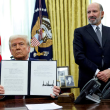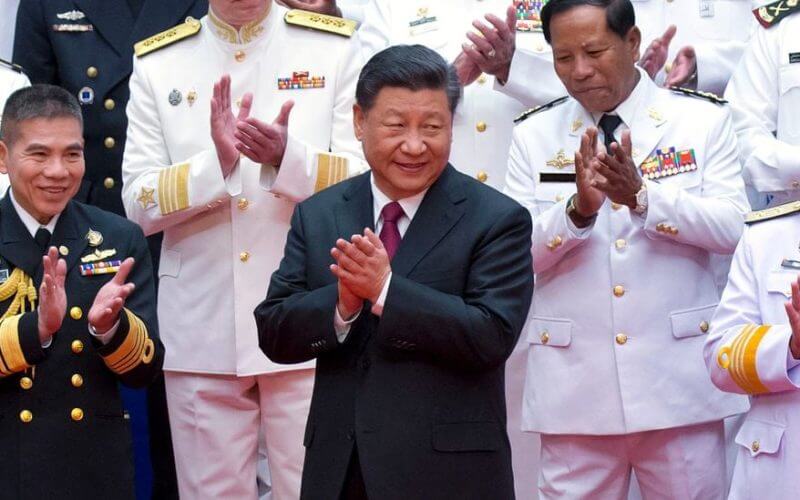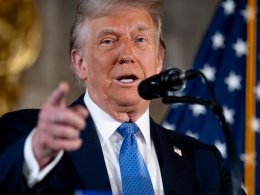By: Micaela Burrow, Daily Caller News Foundation
China is accelerating its military capabilities to invade Taiwan and possibly wage war against the United States in the South China Sea, but its intentions and timeline remain vague, experts told the Daily Caller News Foundation.
National security leaders and experts have made much of intelligence suggesting that Beijing wants to cultivate a military prepared to launch a sea invasion of the democratically-ruled island by force by the year 2027, if not earlier. A recent uptick in warnings of China’s aggressive peacetime activities only reflects that it is on track to meet its objectives, although no one knows whether Chinese President Xi Jinping will order an invasion, experts in Asia-Pacific security told the DCNF.
“What is new is the general consensus that the [People’s Liberation Army] is conducting ever-more aggressive ‘peacetime confrontation’ operations and accelerating its capacity to wage war,” Patrick Cronin, Asia-Pacific security chair at Hudson Institute, told the DCNF. Such “peacetime operations,” or what the U.S. refers to as gray-zone operations, “could escalate into war, so Beijing wants to be ready for a situation that escalates rapidly,” he said.
Gray zone operations include coercive actions short of direct attacks meant to erode adversary morale and blunt their defenses, experts told The New York Times. China constantly works in the gray zone, conducting cyberattacks on critical infrastructure, assaulting Philippine fishing vessels with powerful water hoses and sending warships and fighter aircraft into Taiwan’s air defense identification zone.
Chinese President Xi Jinping ordered the miltary to modernize by 2035, then moved up the milestone to 2027, according to Pentagon officials.
Other military officials warn it could happen even earlier. Air Force Gen. Mike Minihan set off a firestorm in January when he sent a memo to troops under his command encouraging them to train as if they are going to fight China imminently, citing a gut instinct the showdown will take place in 2025.
“The intelligence couldn’t be clearer. Whatever its actual intentions may be I could not say, but China is preparing for a war and specifically for a war with the United States,” Air Force Secretary Frank Kendall said at an Air and Space Force industry event in September.
The Chinese military does not try to conceal its ambitions, according to Reuters.
“The need for high-quality military talent becomes more imperative day by day. The mission and tasks of the navy continue to expand. The speed of the strategic shift of the navy is being accelerated,” stated a People’s Liberation Army Navy (PLAN) recruitment ad for aircraft carrier pilots on Wednesday, Reuters reported.
No date is set in stone, experts told the DCNF, and as far as they can tell, Chinese President Xi Jinping has not decided whether to use force. While Xi Jinping has indicated that he wants to solve the Taiwan issue during his tenure, he also rules like one who expects to remain in power for some time, the experts said.
“Various American military leaders have said that, given what we’re seeing, you know, that seems like a plausible date because they seem to be in a rush. And I kind of agree with that,” Lyle Goldstein, director of the Asia Engagement program at Defense Priorities, told the DCNF.
China has been preparing for the possibility of fighting the U.S. over Taiwan going back to around 1996 or 1997 after realizing Washington intended to preserve the status quo of Taiwan’s semi-autonomy, experts explained.
“The change is finally acting on that knowledge in meaningful ways in the past five years,” Brent Sadler, a senior research fellow for naval warfare at the Heritage Foundation, told the DCNF.
“The PLA has never fielded a more comprehensive and lethal set of capabilities than it does now,” Cronin said.
While most of the focus has been on China’s rapidly expanding Navy, the quality of its ground forces has skyrocketed, Goldstein explained to the DCNF. New equipment, new modes of training concentrated on the types of basic infantry and special forces tactics suitable for fighting in Taiwan’s urban, mountainous terrain shows that China takes prospects of invasion seriously.
“They never thought this was going to be easy, but the Ukraine war has taught them the lesson that they just have to be ready for a grinding fight that that is brutal, that has horrible losses,” Goldstein said.
China will soon begin testing its first indigenous aircraft carrier at sea and is working to upgrade frigates and amphibious assault ships, according to Reuters, but it still lacks the number required for a full-on invasion, experts said. However, there is a workaround: China has plans to mobilize hundreds or thousands of civilian merchant ships, fishing boats, Coast Guard vessels, and anything else capable of ferrying infantry units across the South China Sea, according to a paper by Lonnie Henley, a senior fellow at the Foreign Policy Research Institute who spent 20 years in the intelligence field focused on East Asian security.
In such volumes it would be impossible for even an advanced military to defeat them all, Goldstein told the DCNF.
“Now increasingly, those capabilities are coming to fruition,” he said, noting that change is driving the “alarmist rhetoric” even if that rhetoric is not entirely new. “China appears to be nearly ready, if not already ready. I consider them ready.”
America’s efforts to deter a Chinese invasion could also trigger a preemptive response if Beijing sees a window closing, he added.
The U.S. has begun sending troops to Taiwan to train local forces in recent years. Billions in American security assistance to Ukraine has demonstrated to China the pitfalls of fighting an adversary equipped with a raft of U.S.-made Stingers, Javelins, HIMARS and other weapons, Goldstein said.
At the same time, Washington signaling its resolve to defend Taiwan would be short lived — if, for example, China tested the waters of an invasion and the U.S. responded only tepidly — could create a moment China would seek to capitalize on, Sadler explained to the DCNF.
“The greatest threat to cross-Strait peace is ‘Taiwan independence’ forces and foreign connivance and support for their activities. China has the right to take all necessary measures to resolutely safeguard our sovereignty and security,” Chinese Embassy spokesperson Liu Pengyu told the DCNF.
“And there’s a lot of reasons to think they wouldn’t do it,” Goldstein told the DCNF, referring to an invasion. “But they might. The probability, if I had to guess, of an actual invasion is something like 10%. That’s way too high for me to sleep well at night.”
Related Story: Taiwan Defense Ministry Warns of China’s Increased Military Strength










